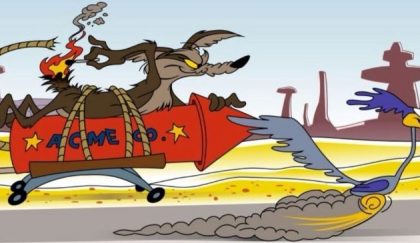When Bigger isn’t Better: The Death of the Giant Agency

Hertz V. Accenture. This story has made waves in the digital world since it hit the internet a month ago, and the details are well-worn by now. Buggy code; not tablet-friendly; over-schedule, and — oh right — a website that wasn’t even responsive. A resulting 32 million dollar lawsuit. One non-performing Goliath severely disappointing another seemingly surprised Goliath.
But this is no shocking revelation.
Website redesigns can be stressful, time-consuming, and expensive engagements, but it’s often how people first interact with your company. Any number of problems a current site is having can vastly impact the user’s successful visit. Consider these:
- Old Design. Was your last website design done by an agency that used whatever aesthetic trend was in that year and now it’s already dated?
- Three’s Company. How many third-party integrations does your site have? Is the site talking to Salesforce, HubSpot, and Mailchimp and no one knows if it’s even working properly?
- CMS. Were you were sold Joomla that hasn’t been updated and the content team loathes it so much that they avoid logging in?
- Content Strategy. Do you have a team keeping your site content up to date as the company changes?
What if you’re a company that has all of these problems (and more) and you don’t even know how to prioritize the problems to properly shop a vendor? We see this all the time, we even wrote a blog about how to better connect with agencies in the RFP process. Understanding what you need and when you need it not only helps set pricing and goals, it also sets defined rules around Discovery. The alternative is a consulting firm charging you thousands of dollars to write a report about all of your problems before any work is touched.
Dream Team?
It should be known that working with a big firm does not equate to working with their ‘top’ team. At Arthur Andersen or Deloitte or PWC or any firm at the level, you as the client will be paying an excessive hourly rate; as you’re expecting world-caliber quality. But chances are, you will not get the best of the best because the stars of the firm are busied directing or managing the firm’s biggest account. You’re likely just another client to one of these massive consulting firms, and your precious project will be outsourced overseas.
Outsourcing is an ugly necessity for firms of this volume to meet goals and deliverable timelines, adding another layer of (expensive) complexity to the redesign. When your project is sent off to be built with cheaper resources, who is managing the processes? who is translating the deep strategy done in discovery? and who pays the cost when this long distance game of direct messaging hits inevitable snags?
Real Results
We here at WDG go after a select amount of clients a year, carefully considering who we want to work with and ensuring each project fits certain criteria. Since we take a limited amount of clients, you are getting the best with the benefit of our full focus. The people that pitch you, the people you have those early conversations with, will actually be the people you’re working with later. You will not just be assigned an arbitrary project manager, but a whole strategic team attuned to your needs.
The Hertz blunder is truly boggling in that their website wasn’t even responsive. For us, a responsive website is a baseline, default assumption. It’s only the beginning of what we can do for you and your organization. In construction terms, Accenture ostensibly ‘built’ a house that immediately collapsed upon ‘completion’.
More Money, More Problems
In terms of economics, think of the offerings of a large firm as a Veblen good. This is a luxury item that as the price goes up, so does the demand. There is also the scarcity effect in play. As there are fewer giant firms and they are costly, there is an assumption of top quality. Think of Supreme — do you really want to spend a thousand dollars on a hoodie? No, you don’t. But this same psychology preys on clients when choosing an agency, as they think that brand recognition in and of itself means something. The only thing it means is that you’ve spent an unforgivable amount of money with nothing to show.
When Big Goes Bad
- Lack of transparency
- Excessive overhead
- Your project is not a priority
- Lack of collaboration
- Less oversight
- No assurance of team quality
A Boutique Behemoth
Most successful companies and products in the digital sphere are built by tight-knit firms. Think of Instagram (you’re scrolling through it right now). They built one of the best products in the world with a team of a dozen and sold it for billions of dollars. There are other precedents that refute the impulse to hire the giants. The Health.gov failure was a 100 million dollar calamity that was in part, saved by a more nimble team.
The Hertz V. Accenture dumpster cluster is a testament to a need for a changing paradigm in the whole landscape of web development. This business is fraught with a lot of players and moving parts, a swirl of ideas and egos clashing and trying to harmoniously meld into one joint, shared vision. This is only possible with a dedicated team. A website rebuild is no longer a one-sided job in a vacuum, but rather a collaborative creative endeavor with a strategic partner that will shepherd, train and educate the client throughout the process and beyond.
